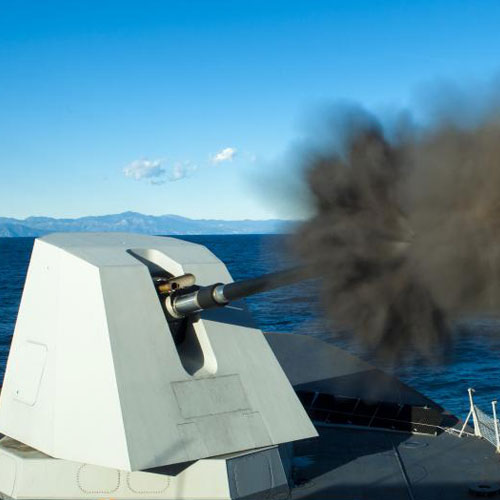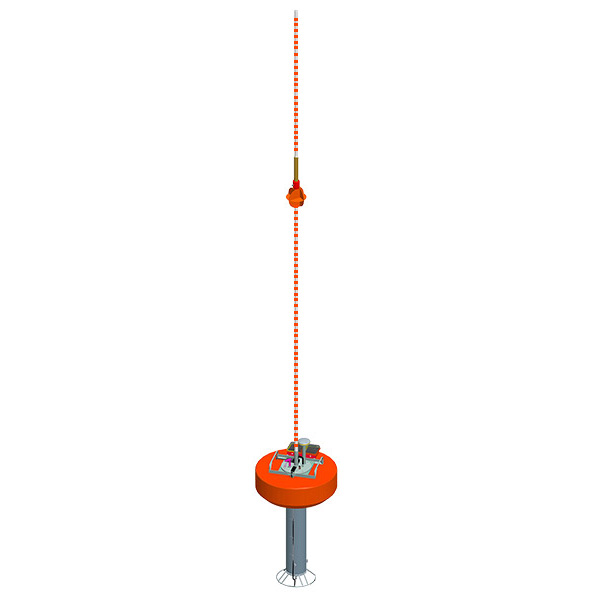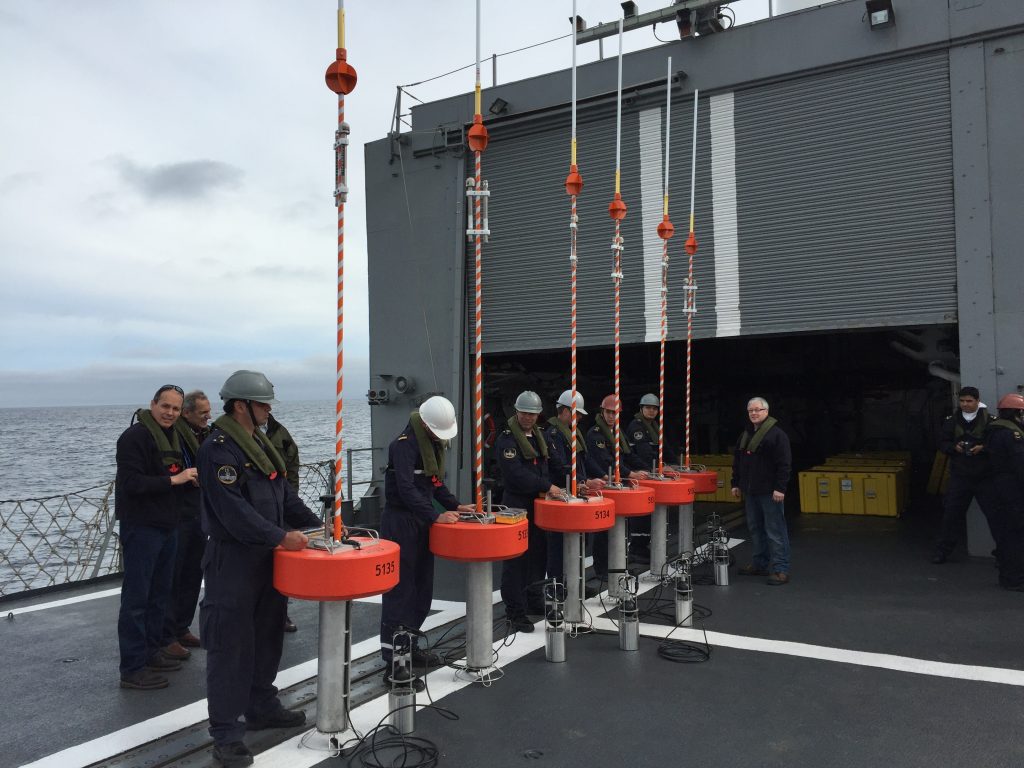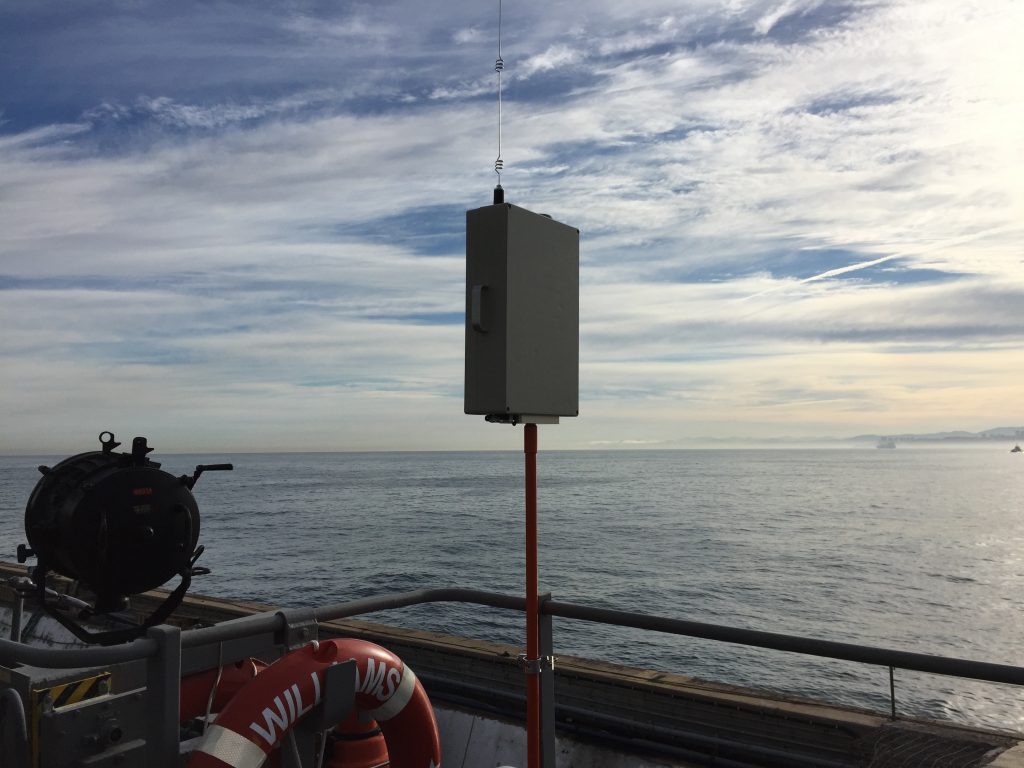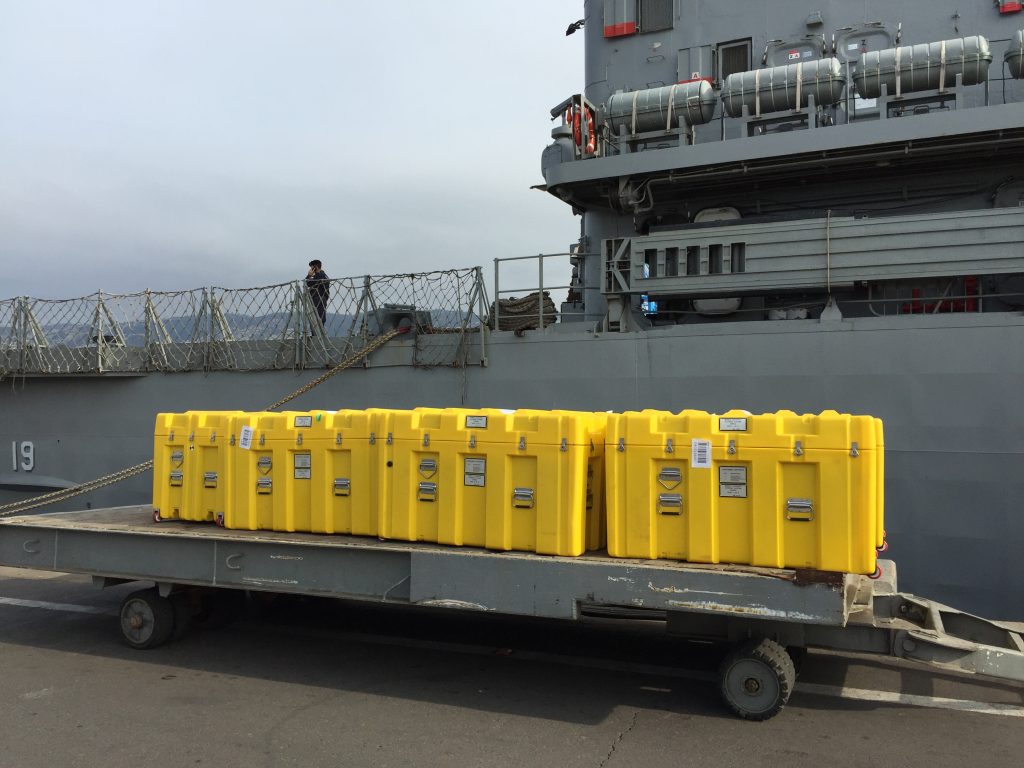MASS (Maritime Acoustic Scoring and Simulation) System
The Maritime Acoustic Scoring and Simulation (MASS) system is a waterborne, portable, ship-deployable/recoverable range and training tool. MASS scores and analyzes live-fire surface gunnery exercises, air-to-ground weapons exercises, and other test and evaluation events
Request a quoteOverview
The Maritime Acoustic Scoring and Simulation (MASS) system is a waterborne, portable, ship-deployable/recoverable range and training tool. MASS scores and analyzes live-fire surface gunnery exercises, air-to-ground weapons exercises, and other test and evaluation events.
The MASS concept is based on the recognition that a projectile will generate a detectable acoustic event when it impacts water. The characteristics of this type of acoustic event can be detected and accurately located with an in-water array of acoustic sensors and digital signal processing technology.
The MASS system consists of acoustic sensors, which are incorporated into six sensor buoys. When an acoustic event occurs the buoys triangulate the location of impact. Global-Positioning Satellite (GPS) and receivers provide precise positioning data of the buoys and firing platforms. Upon impact detection, the buoys transmit data via the secure Iridium satellite network to the system controller unit located on the supporting platform. The system controller calculates and displays the projectile’s impact location in real-time allowing immediate feedback to the firing platform.
MASS is an essential and cost-effective solution for all active Navies, it permits Navies to conduct training activities at secure locations while deployed at sea. MASS also eliminates costly travel time, personnel resources, and excessive fuel costs which are necessary when traveling and utilizing land-ranges. In addition to the various costs saving advantages of the system, MASS also minimizes the human and environmental risks associated with land-ranges.
- Features
- Specs
- Downloads
- Automatic Scoring and Assessment
- Reduced Mission Costs
- Improved training accuracy
- Portable
System Components
- Vessel base station comprising of standard laptop computer and radio transceiver
- Vessel-based radio repeater
- Buoy operating array, typically 6 units
- Each buoy equipped with GPS, radio, hydrophone, radar reflector and flashing warning beacon
Buoy System Specifications
- RF range: At least 20,000 m line of sight, maximum depending on conditions and repeater height, 900 MHz spread spectrum radio, 1 watt RF power
- Buoy GPS self-location accuracy: Less than 10 m 99% of locations. Less than 1 m for 1 standard deviation
- Buoy accuracy for a reported time of arrival of an acoustic event: 150 microseconds (equivalent to a spatial resolution of 23 cm)
- Acoustic event detection range: At least 5,000 m in open ocean (low sea state conditions)
- Buoy acoustic projector range: Maximum 2,000 m
- Active operating time: 72 hours with fully charged battery pack
- Flotation collar: Diameter 61 cm, depth 20 cm. Materials: ionomer foam. Colour: Yellow
- Hull: Diameter 15 cm, length 120 cm. Materials: stainless steel. Weight: 36 kg
- Antenna mast: Diameter maximum 5 cm, length 390 cm.
- Materials: marine grade aluminum and stainless steel. Colour: White. Weight: 3.1 kg
- Hydrophone: Diameter 14 cm and suspension cable, length 6.6 m.
Materials: piezoelectric ceramic. Colour: Black. Weight: 10.5 kg in
protective cage














